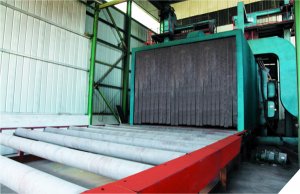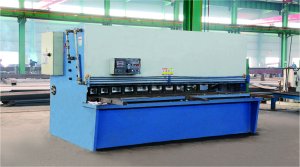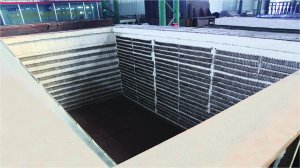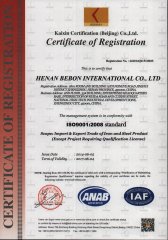High-strength steel represents a pinnacle of engineering achievement, offering exceptional mechanical properties that enable lighter, stronger, and more durable structures across various industries. From automotive and aerospace to construction and manufacturing, the widespread adoption of high-strength steel has revolutionized the way engineers design and build a diverse array of products and infrastructure.
High-strength steel exhibits significantly higher strength compared to conventional steel grades, allowing engineers to achieve greater structural performance while reducing weight. This superior strength-to-weight ratio is critical for applications where weight reduction is paramount, such as automotive and aerospace components.High-strength steel alloys are engineered to provide superior yield and tensile strength compared to traditional steel grades. This enables structures to withstand higher loads and forces, improving safety margins and reducing the risk of structural failure under extreme conditions.High-strength steel demonstrates enhanced fatigue and impact resistance, making it suitable for applications subject to cyclic loading and dynamic forces. This property is particularly important in automotive and heavy machinery components, where durability and reliability are essential.Despite its high strength, advanced manufacturing techniques allow high-strength steel to retain excellent formability and weldability. This enables engineers to fabricate complex shapes and structures while maintaining structural integrity and dimensional accuracy.Some high-strength steel alloys are formulated to offer improved corrosion resistance compared to conventional steel grades. This makes them suitable for applications exposed to harsh environments, such as marine structures and offshore installations.
High-strength steel is extensively used in the automotive industry for the production of lightweight, fuel-efficient vehicles. Applications include chassis components, body panels, safety features, and structural reinforcements. Advanced high-strength steel (AHSS) alloys enable automakers to meet stringent safety and emissions standards while reducing vehicle weight and improving fuel economy.In the aerospace sector, high-strength steel is employed in the construction of aircraft structures, engine components, landing gear, and fasteners. Its high strength-to-weight ratio allows for the design of lightweight yet robust aircraft, enhancing performance, fuel efficiency, and safety.High-strength steel is increasingly used in the construction of buildings, bridges, and infrastructure projects. Applications include structural beams, columns, reinforcing bars, and pre-fabricated components. High-strength steel offers advantages such as higher load-carrying capacity, longer spans, and reduced material usage, leading to cost savings and enhanced structural performance.High-strength steel is essential for the manufacturing of heavy machinery and equipment used in mining, agriculture, construction, and manufacturing sectors. Components such as excavator buckets, crane booms, bulldozer blades, and hydraulic cylinders benefit from the superior strength and durability of high-strength steel alloys.In the energy sector, high-strength steel plays a vital role in the construction of oil and gas pipelines, wind turbine towers, and offshore platforms. Its high load-bearing capacity, corrosion resistance, and fatigue strength make it well-suited for the demanding conditions encountered in energy extraction and generation facilities.
High-strength steel alloys are developed through precise alloying and heat treatment processes. Engineers carefully select alloying elements such as carbon, manganese, silicon, nickel, chromium, and molybdenum to achieve the desired mechanical properties, including strength, ductility, and toughness.High-strength steel is cast into ingots or billets and then hot-rolled, cold-rolled, or forged into the desired shapes and dimensions. Advanced forming techniques, such as extrusion, drawing, and stamping, are employed to fabricate complex components with tight tolerances.
Heat treatment processes, such as quenching and tempering, are used to enhance the mechanical properties of high-strength steel. Quenching involves rapid cooling of the steel to achieve high hardness and strength, while tempering reduces brittleness and improves toughness.High-strength steel surfaces may undergo surface treatment and coating processes to improve corrosion resistance, wear resistance, and aesthetic appeal. Surface treatments include galvanization, electroplating, anodizing, and powder coating, depending on the application requirements.
Ongoing research and development efforts are focused on the development of advanced high-strength steel alloys with even higher strength-to-weight ratios, improved formability, and enhanced corrosion resistance. These materials will enable engineers to push the boundaries of structural performance and design innovation across various industries.Integrated manufacturing technologies, such as additive manufacturing (3D printing) and advanced robotics, will continue to revolutionize the production of high-strength steel components. These technologies offer greater design freedom, reduced material waste, and increased production efficiency, driving down costs and lead times.Environmental sustainability is a key consideration in the development and use of high-strength steel. Efforts to reduce carbon emissions, energy consumption, and material waste will drive the adoption of eco-friendly manufacturing processes and recycling practices, ensuring that high-strength steel remains a sustainable and responsible choice for future generations.
High-strength steel represents a cornerstone of modern engineering, offering unparalleled strength, durability, and versatility across a wide range of applications. From automotive and aerospace to construction and manufacturing, the transformative impact of high-strength steel continues to drive innovation and shape the future of engineering excellence. As technology advances and materials science evolves, high-strength steel will remain at the forefront of engineering innovation, enabling engineers to create safer, more efficient, and more sustainable solutions to meet the challenges of the 21st century.

 Address:Zhengzhou city in China.
Address:Zhengzhou city in China. Phone:0086-371-86151827
Phone:0086-371-86151827 Email:
Email:



 Address: Zhengzhou city in China.
Address: Zhengzhou city in China.


